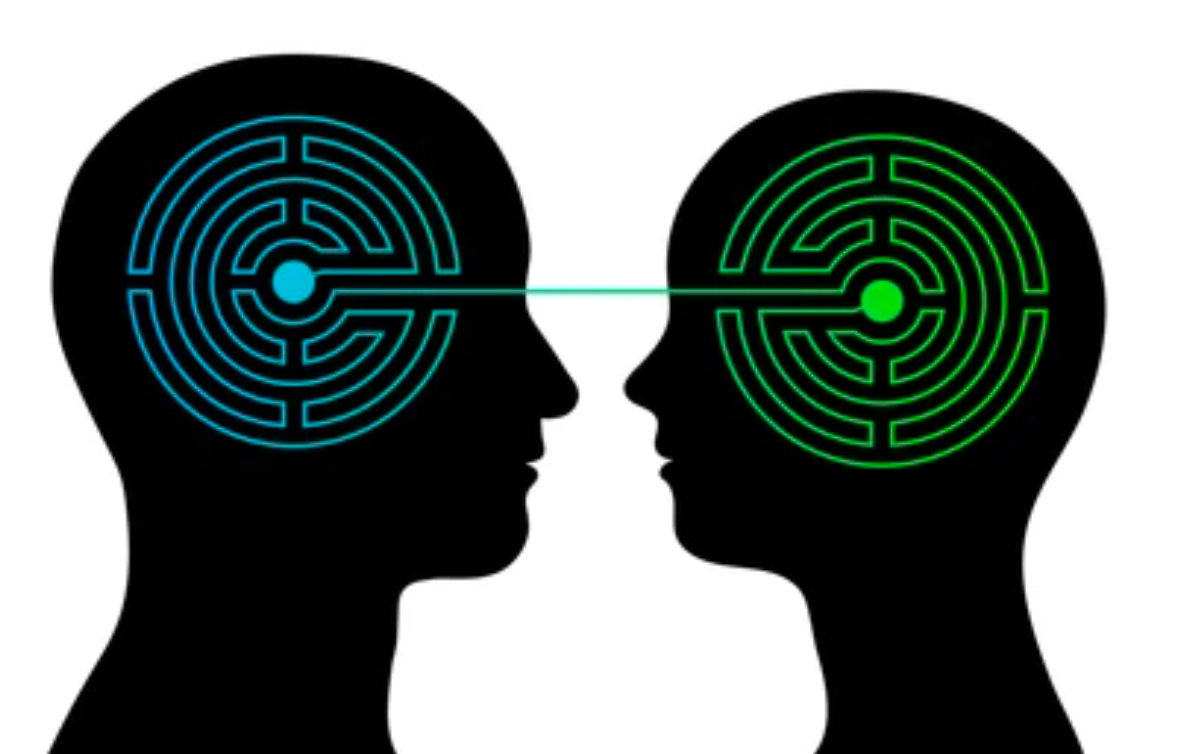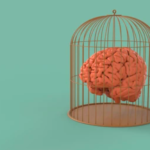
How are we influenced by the people around us, and can we measure the impact our relationships have on our lives?
You are probably familiar with phrases like: “You are the product of the 5 people you surround yourself with”, or “We’re vibing”, “We are on the same wavelength”, and “We are in synch”. But what do these sayings mean scientifically? Can we measure human connection?
Let’s take a step back:
Human Beings are Social Animals and Hardwired for Connection
We need other humans to live healthy and meaningful lives. From birth, our survival depends—physiologically, emotionally, and physically—on others, such as our parents or primary caregivers. Throughout our lives, “the quality of our relationships determines the quality of our lives,” as psychotherapist Esther Perel puts it.
Harvard Medical School analysed data from over 309,000 people and found that a lack of strong relationships increased the risk of premature death by 50%. This effect on mortality is roughly comparable to smoking 15 cigarettes a day and is more significant than the risks posed by obesity and physical inactivity.
When we feel connected to others, our bodies release stress-reducing hormones that support coronary artery health, gut function, insulin regulation, and the immune system.
“Loneliness kills. What’s most important for long-term happiness and well-being is the quality of your close relationships.”
– Psychiatrist & Harvard Professor, Robert Waldinger
So,
What Happens in the Brain and Body When We Connect, and How Can We Measure It?
Human connection impacts us on every level (neurally, physiologically, hormonally, psychologically, behaviourally) and therefore, can be measured in multiple ways.
A Neurological Perspective
Brain activities synchronise
Measured through EEG (electroencephalogram) and fMRI (functional magnetic resonance imaging)
Research shows that when people engage in meaningful conversation or cooperative tasks, their neural activity synchronises in regions throughout the brain. This effect, known as interbrain synchrony, can also be observed in group settings, e.g., when musicians in an orchestra create something new together, with their brainwaves syncing up. However, for this effect to occur, people need to be in close proximity and able to have eye contact. Synchronization is significantly reduced when communication happens through technology, like video calls.
Additionally, “mirror neurons” are activated both when a person performs an action and when they observe someone else performing the same action. These neurons play a key role in empathy, helping us feel what others are feeling, thus fostering a sense of connection.
A Physiological Perspective
Heart rate and breathing synchronise
Measured through e.g., HRV (heart rate variability) or RSA (respiratory sinus arrhythmia)
Studies have shown that individuals who share a deep connection often experience synchronized physiological responses, such as heart rate and breathing patterns aligning. For example, couples in long-term relationships or mothers and infants can exhibit synchronized heart rhythms and breathing patterns, even without consciously trying.
Pain threshold increases
Measured through e.g., pain-related SCRs (skin conductance responses) and fMRI
Our pain threshold is higher when we are supported by loved ones, whether the pain is acute or chronic:
- Acute pain: When a significant other holds our hand during a painful experience, our body becomes more resilient to the pain.
- Chronic pain: Those with supportive, close relationships tend to report lower levels of chronic pain compared to their more isolated peers.
In both cases, social support signals safety, altering how the body and brain perceive pain.
The Widowhood Effect
Findings based on large meta-analysis
This term refers to the increased risk of mortality (from all causes) within the first three to six months after a spouse’s death. The author of one of the widowhood effect studies descried their findings as “one of the best documented examples of the effect of social relations on health.”
A Hormonal Perspective
Oxytocin levels rise
Measured through blood or salvia samples
Known as the “bonding hormone,” oxytocin is released during moments of connection, trust, and emotional closeness. Peak oxytocin levels are seen during childbirth and breastfeeding but are also present during other intimate moments like romantic love or caregiving. This hormone can be measured in blood or saliva, providing a biochemical indicator of social bonding.
A Psychological & Behavioural Perspective
Social contagion
Measured through e.g., facial electromyography, GSR (galvanic skin response), or HRV (heart rate variability)
Just like yawning, emotions (such as fear or happiness) can be contagious, too. Research has shown that observing someone in a stressful situation can trigger what is called stress contagion, where another person’s stress influences the physiological and emotional states of those around them, even without direct interaction. This can occur through biological mechanisms, such as the release of pheromones, or through social cues and emotional expressions. For example, stress contagion is commonly observed in workplace environments, where one person’s stress can create a ripple effect, amplifying negative emotions and increasing anxiety in others, which can ultimately disrupt group dynamics.
Note: If you would like to support my work, here is a way: Ko-fi.com/neurosciencemusings. If you choose to do so, Thank you!
Verbal and non-verbal communication aligns
Measured through e.g., linguistic analysis tools and software that tracks body movements and facial expressions
When people are connected, their language patterns often synch up. This includes matching tone, pace of speech, or using similar words and phrases. These synchronicities also manifest non-verbally, such as through mirrored gestures, postures, or facial expressions, all of which signal rapport and alignment.
Increased cooperation and trust
Measured through behavioural studies
The more connected people feel, the better they collaborate and solve problems. This point is fairly self-explanatory, but I want to include it because it highlights the importance of team members getting along in relation to achieving effective work outcomes, as well as increased employee satisfaction and well-being.
Caution!
The more connected we are with others, the more we synchronize — neuronally, physiologically, hormonally, psychologically, and behaviourally. It’s essential to be mindful of our environment because our relationships directly influence our well-being, affecting both mind and body. As social beings, the quality of our connections not only enhances happiness but is also crucial for our health and survival. Strengthening these bonds is key to living a healthier and more fulfilling life.
What do you think? Where you surprised by any of the information or did you (intuitively) know? If you would like to share your thoughts, you can find me on Instagram @neuroscience.musings.
Best regards,
Sarah
Resources:
- Auer, A., Walther, L. M., Jendryczko, D., Auer, L., & Wirtz, P. H. (2024). Is your stress my stress? A standardized, randomized-controlled paradigm to study physiological stress contagion based on direct stress observation. Psychoneuroendocrinology, 162, 106964.
- Coan, J.A., Schaefer, H.S., & Davidson, R.J. (2006). Lending a hand: Social regulation of the neural response to threat. Psychological Science, 17(12), 1032-1039.
- Elwert, F., & Christakis, N. A. (2008). The effect of widowhood on mortality by the causes of death of both spouses. American journal of public health, 98(11), 2092-2098.
- Erkens, V. A., Nater, U. M., Hennig, J., & Häusser, J. A. (2019). Social identification and contagious stress reactions. Psychoneuroendocrinology, 102, 58-62.
- Feldman, R., Gordon, I., & Zagoory-Sharon, O. (2012). The cross-generation transmission of oxytocin in humans. Hormones and Behavior, 61(5), 666-672.
- Hatfield, E., Cacioppo, J.T., & Rapson, R.L. (1994). Emotional Contagion. Current Directions in Psychological Science, 2(3), 96-100.
- https://www.health.harvard.edu/healthbeat/strengthen-relationships-for-longer-healthier-life
- https://www.psychologytoday.com/us/blog/best-practices-in-health/202404/stress-contagion-does-observing-others-anxiety-impact-you
- https://www.uhhospitals.org/blog/articles/2018/05/the-widowhood-effect
- Moon, J. R., Kondo, N., Glymour, M. M., & Subramanian, S. V. (2011). Widowhood and mortality: a meta-analysis. PloS one, 6(8), e23465.
- Reddan, M. C., Young, H., Falkner, J., López-Solà, M., & Wager, T. D. (2020). Touch and social support influence interpersonal synchrony and pain. Social cognitive and affective neuroscience, 15(10), 1064-1075.
- Riggio, R. E., & Riggio, C. R. (2023). Social contagion.
- Schwartz, L., Levy, J., Endevelt-Shapira, Y., Djalovski, A., Hayut, O., Dumas, G., & Feldman, R. (2022). Technologically-assisted communication attenuates inter-brain synchrony. Neuroimage, 264, 119677.


